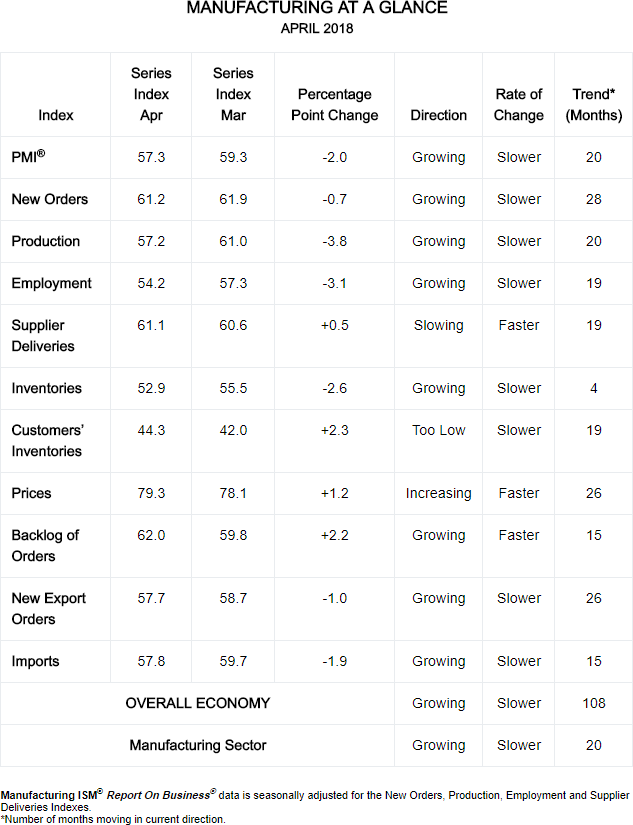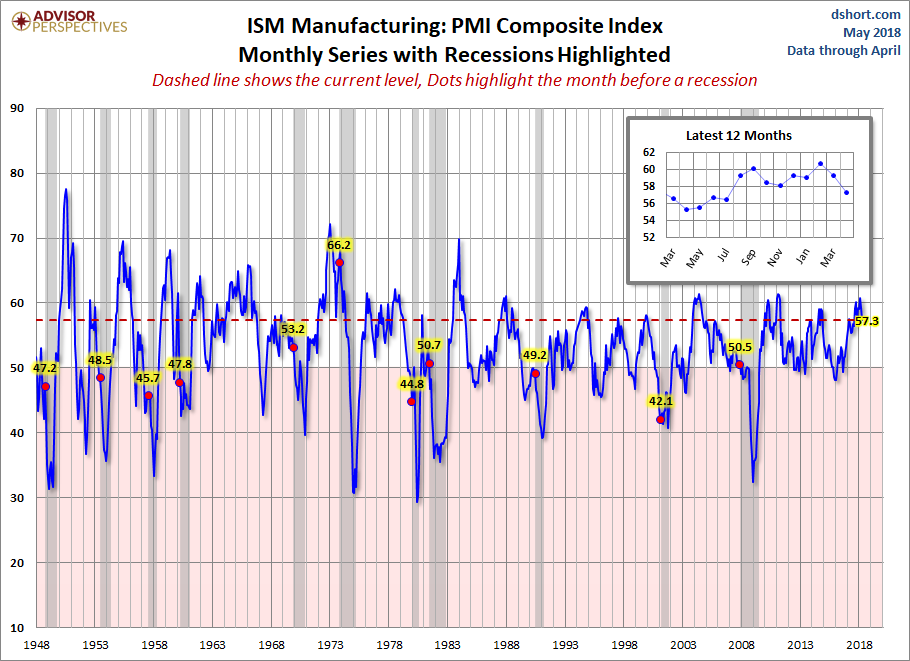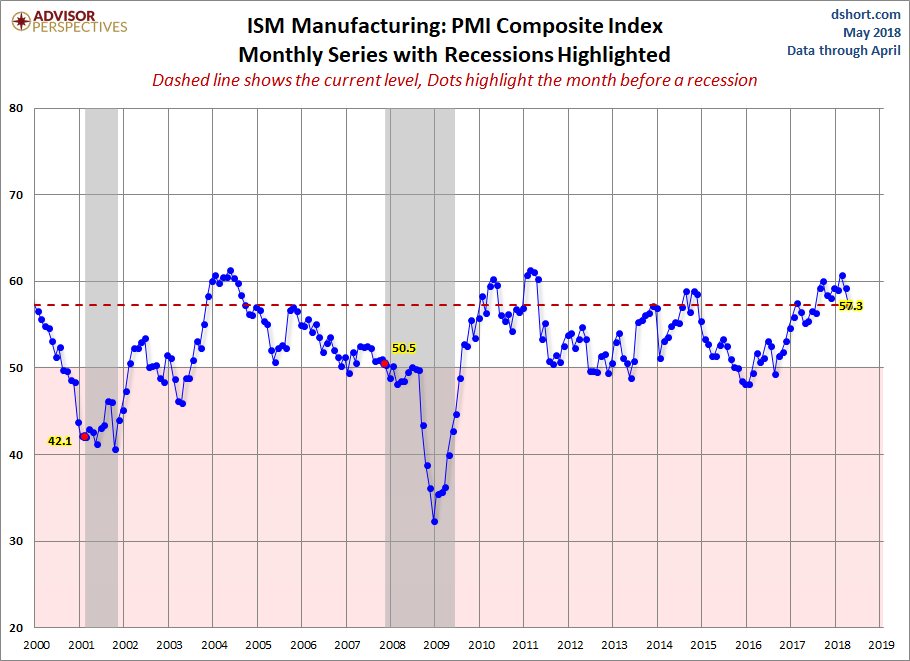Today the Institute for Supply Management published its monthly Manufacturing Report for April. The latest headline Purchasing Managers Index (PMI) was 57.3 percent, a decrease of 2.0 percent from 59.3 the previous month. Today's headline number was below the Investing.com forecast of 58.6 percent.
Here is the key analysis from the report:
“The April PMI® registered 57.3 percent, a decrease of 2 percentage points from the March reading of 59.3 percent. The New Orders Index registered 61.2 percent, a decrease of 0.7 percentage point from the March reading of 61.9 percent. The Production Index registered 57.2 percent, a 3.8 percentage point decrease compared to the March reading of 61 percent. The Employment Index registered 54.2 percent, a decrease of 3.1 percentage points from the March reading of 57.3 percent. The Supplier Deliveries Index registered 61.1 percent, a 0.5 percentage point increase from the March reading of 60.6 percent. The Inventories Index registered 52.9 percent, a decrease of 2.6 percentage points from the March reading of 55.5 percent. The Prices Index registered 79.3 percent in April, a 1.2 percentage point increase from the March reading of 78.1 percent, indicating higher raw materials prices for the 26th consecutive month. Comments from the panel reflect continued expanding business strength. Demand remains strong, with the New Orders Index at 60 or above for the 12th straight month, and the Customers’ Inventories Index remaining at low levels. The Backlog of Orders Index continued expanding, with its highest reading since May 2004, when it registered 63 percent. Consumption, described as production and employment, continues to expand, but has been restrained by labor and skill shortages. Inputs, expressed as supplier deliveries, inventories and imports, declined overall, due primarily to inventory reductions likely led by supplier performance restrictions. Lead time extensions, steel and aluminum disruptions, supplier labor issues, and transportation difficulties continue. Export orders remained strong. The Prices Index is at its highest level since April 2011, when it registered 82.6 percent. In April, price increases occurred across 17 of 18 industry sectors. Demand remains robust, but the nation’s employment resources and supply chains continue to struggle.”
Here is the table of PMI components.

The chart below shows the Manufacturing Composite series, which stretches back to 1948. The eleven recessions during this time frame are indicated along with the index value the month before the recession starts.

For a diffusion index, the latest reading of 57.3 is its twentieth consecutive month of expansion. What sort of correlation does that have with the months before the start of recessions? Check out the red dots in the chart above.
Here is a closer look at the series beginning at the turn of the century.

Note: This commentary used the FRED USRECP series (Peak through the Period preceding the Trough) to highlight the recessions in the charts above. For example, the NBER dates the last cycle peak as December 2007, the trough as June 2009 and the duration as 18 months. The USRECP series thus flags December 2007 as the start of the recession and May 2009 as the last month of the recession, giving us the 18-month duration. The dot for the last recession in the charts above is thus for November 2007. The "Peak through the Period preceding the Trough" series is the one FRED uses in its monthly charts, as illustrated here.
